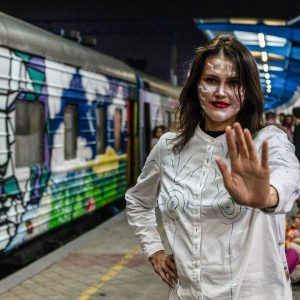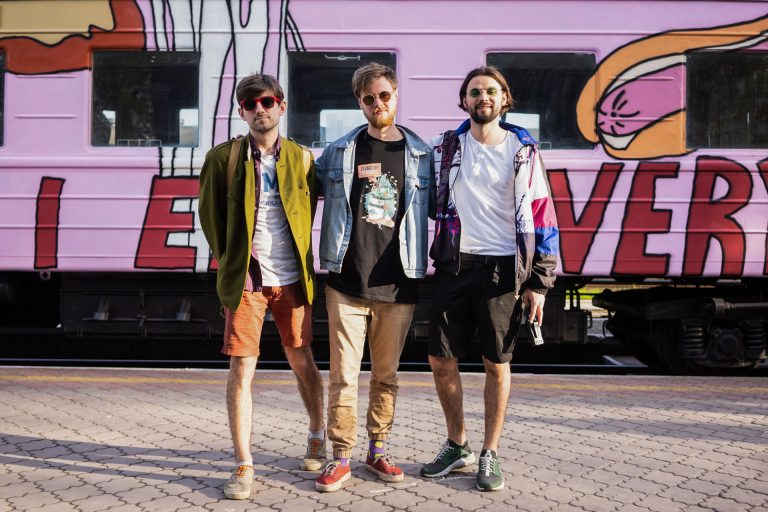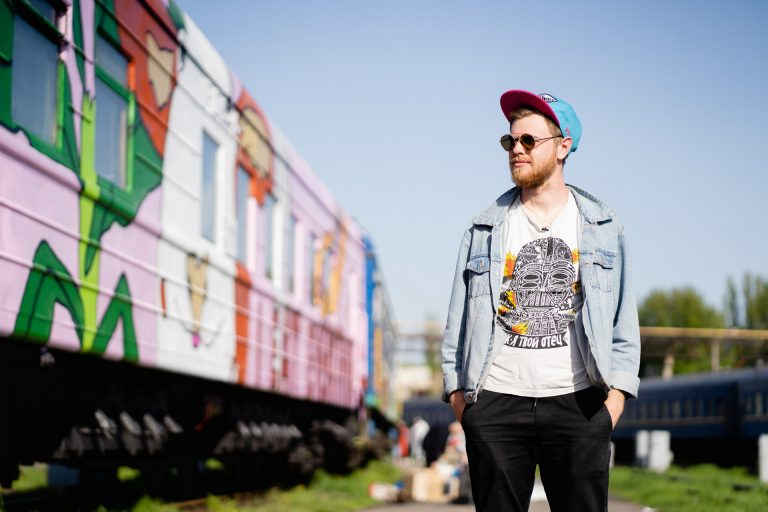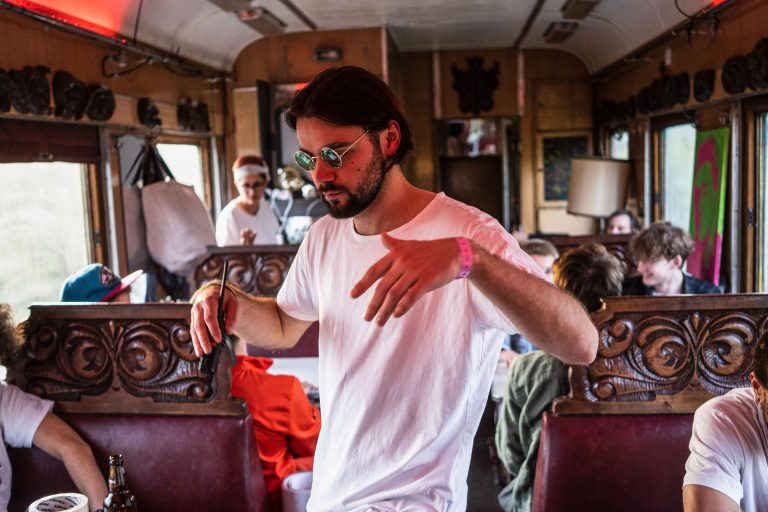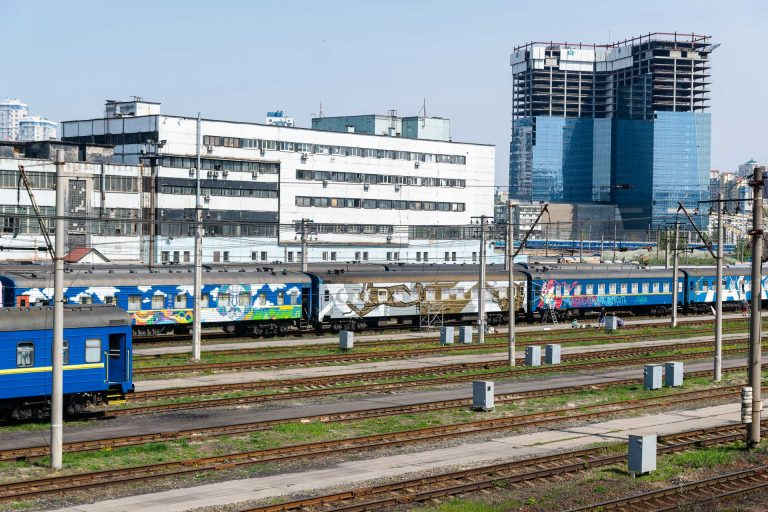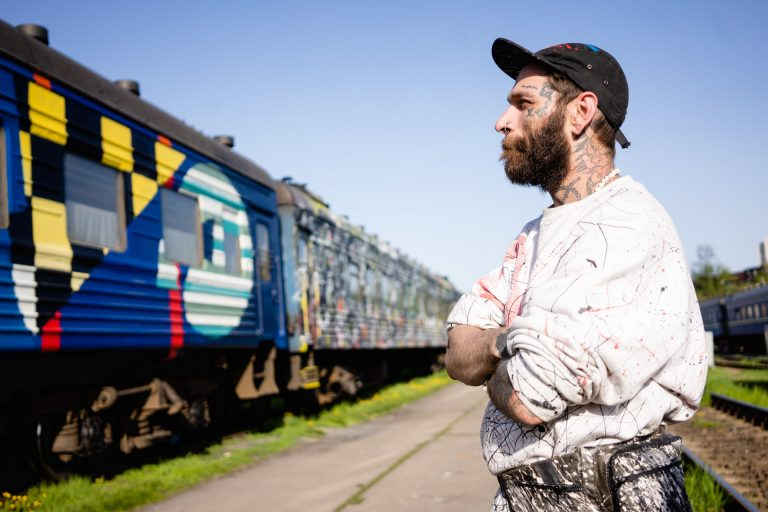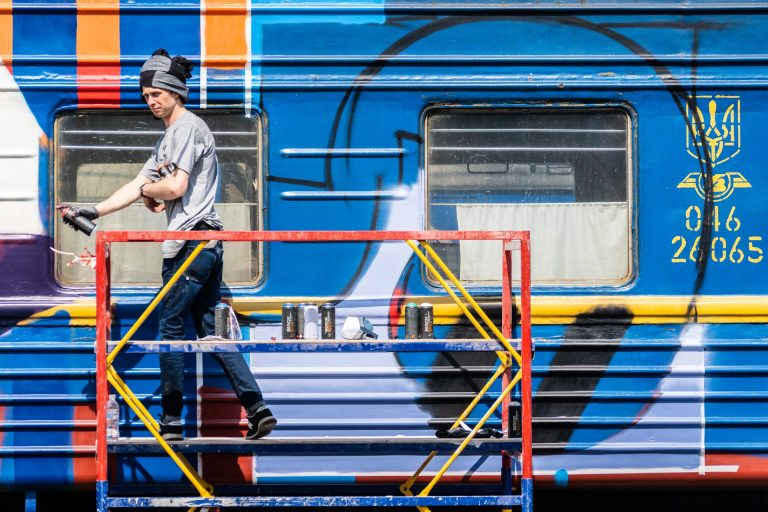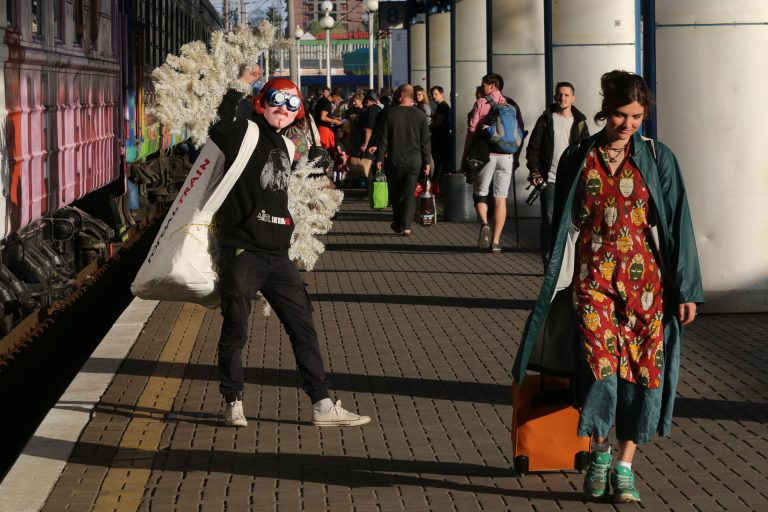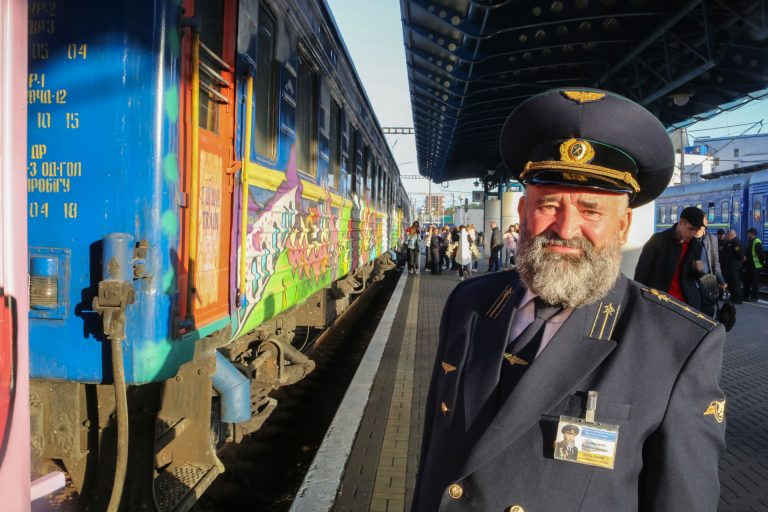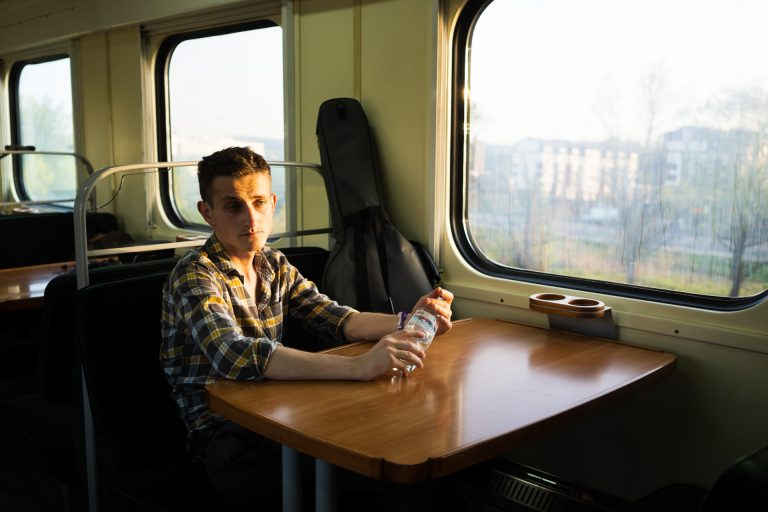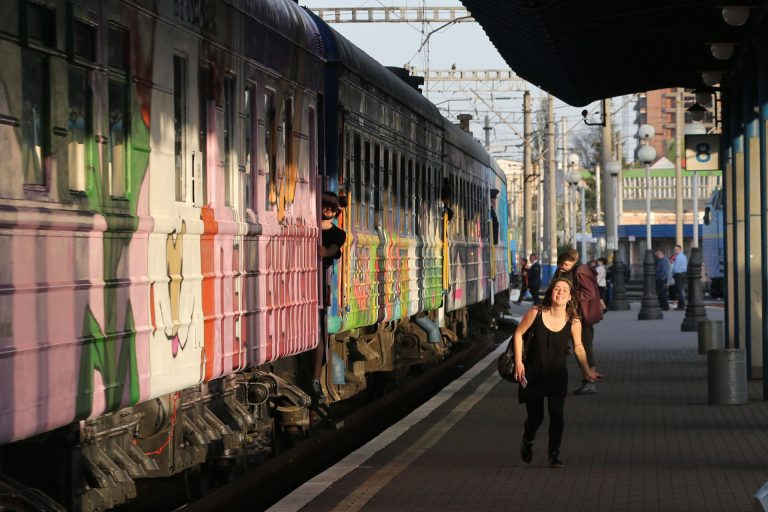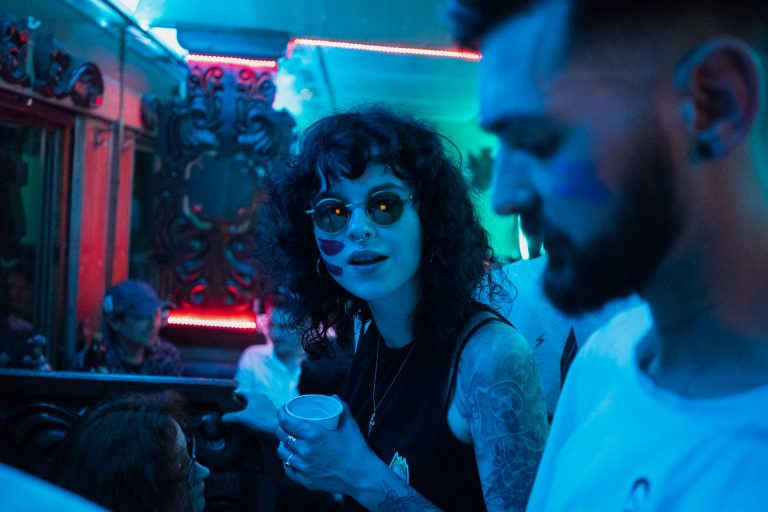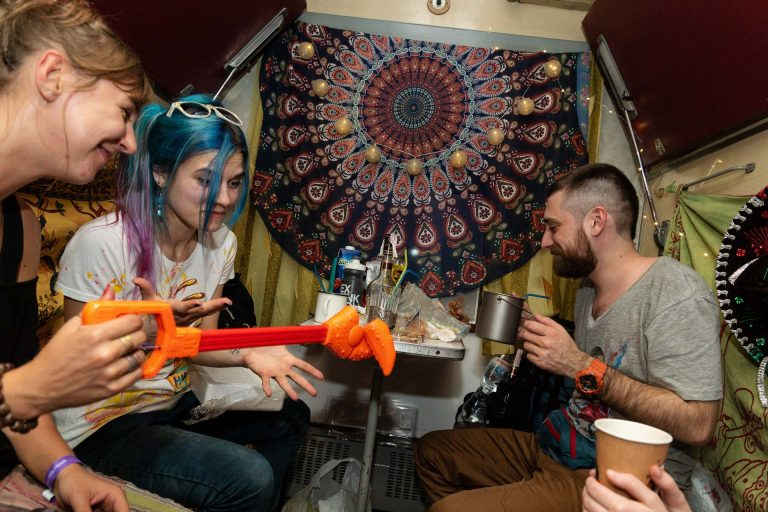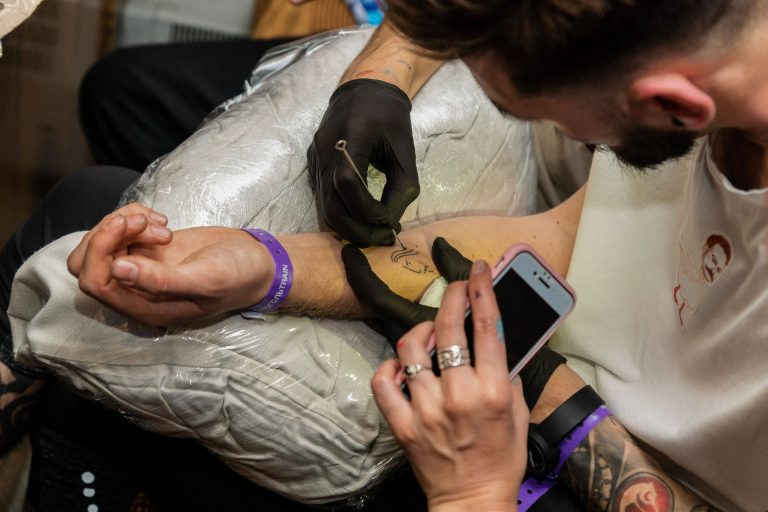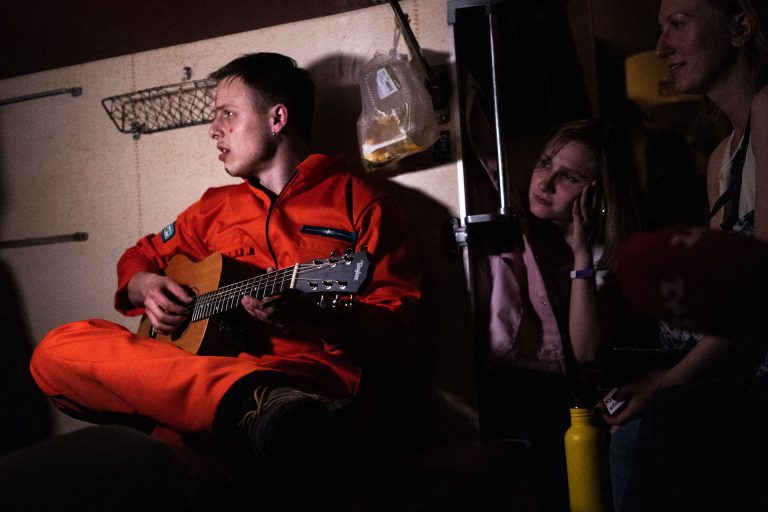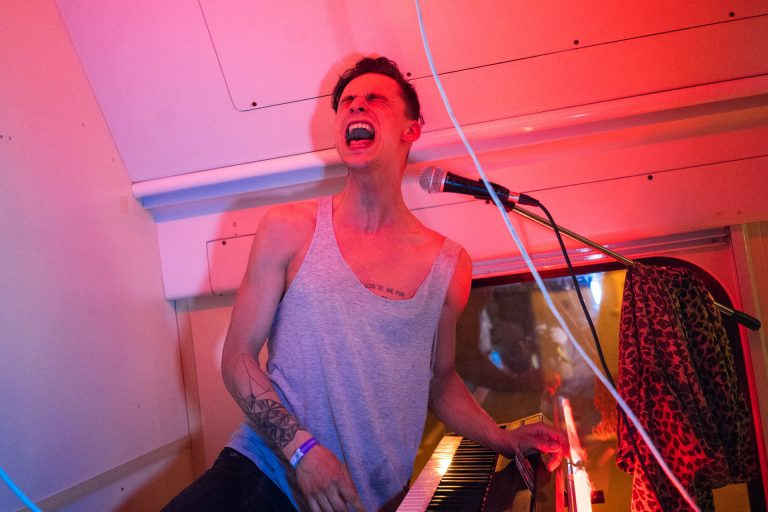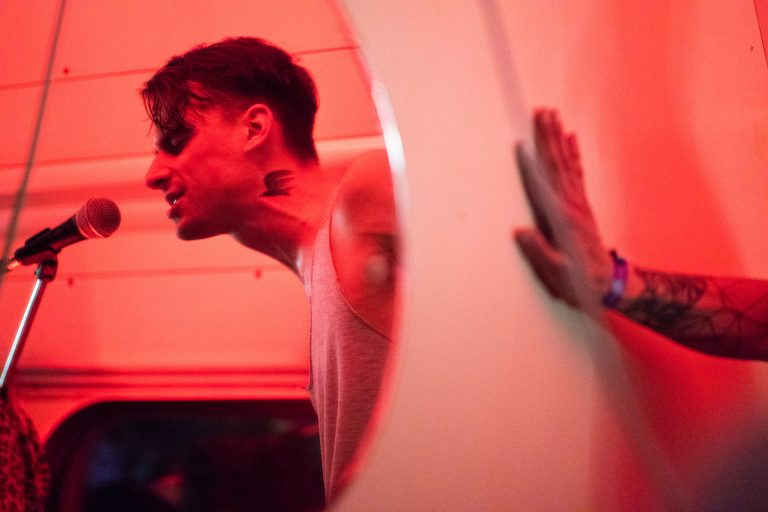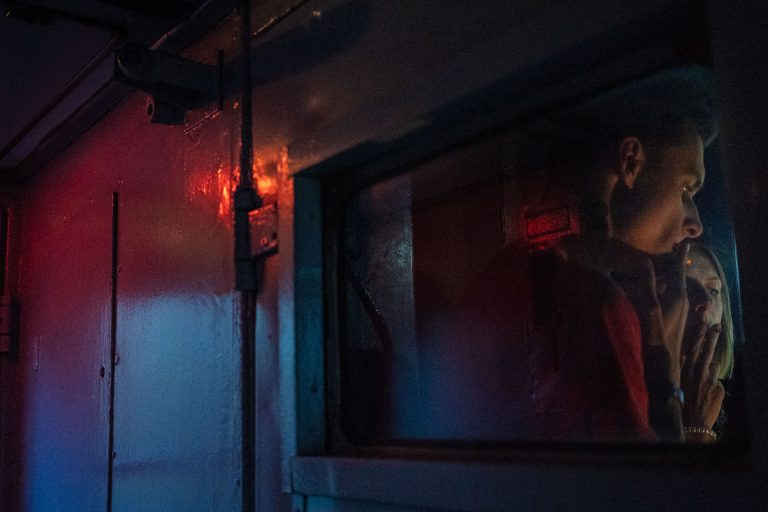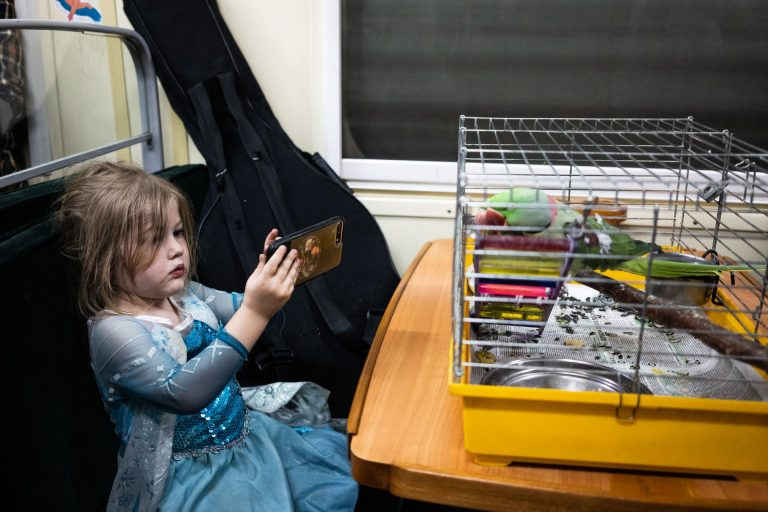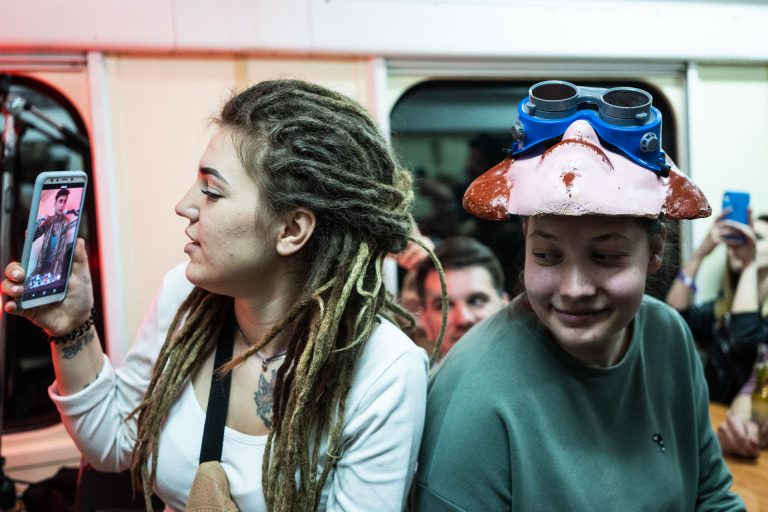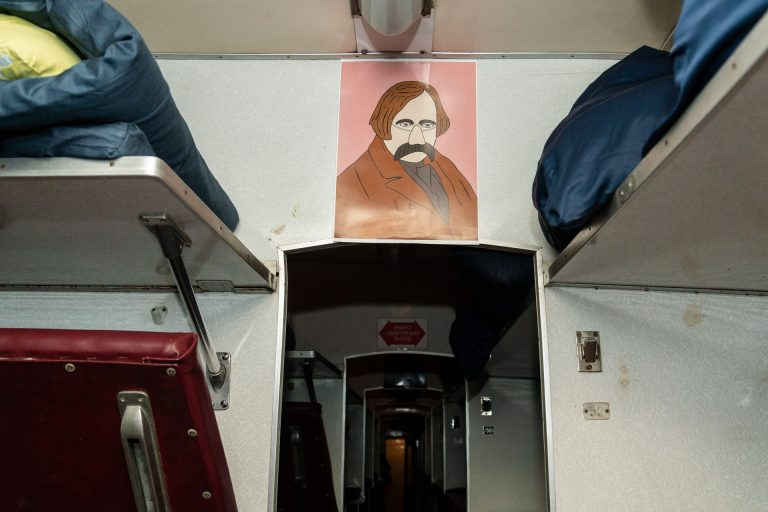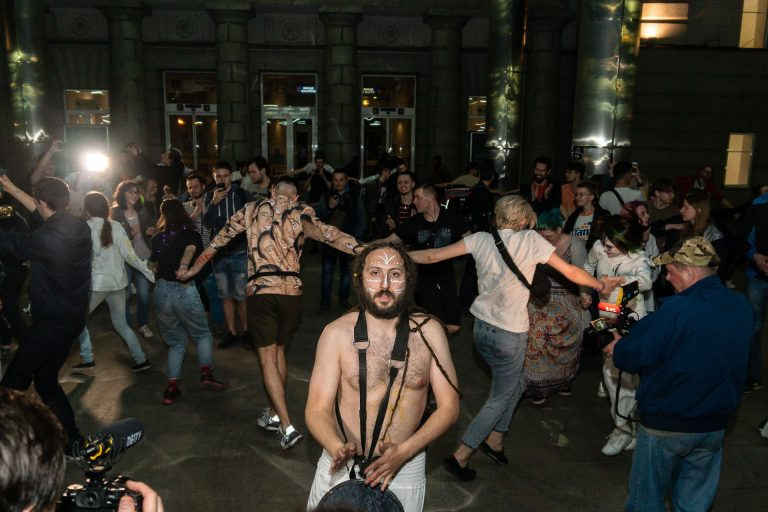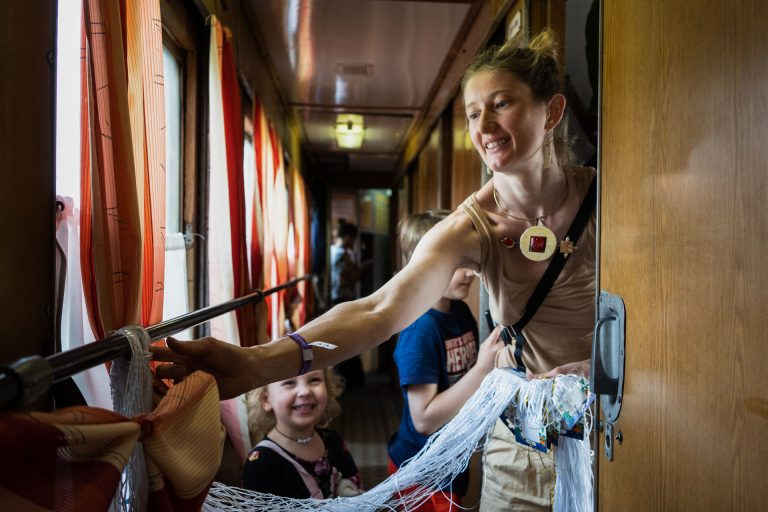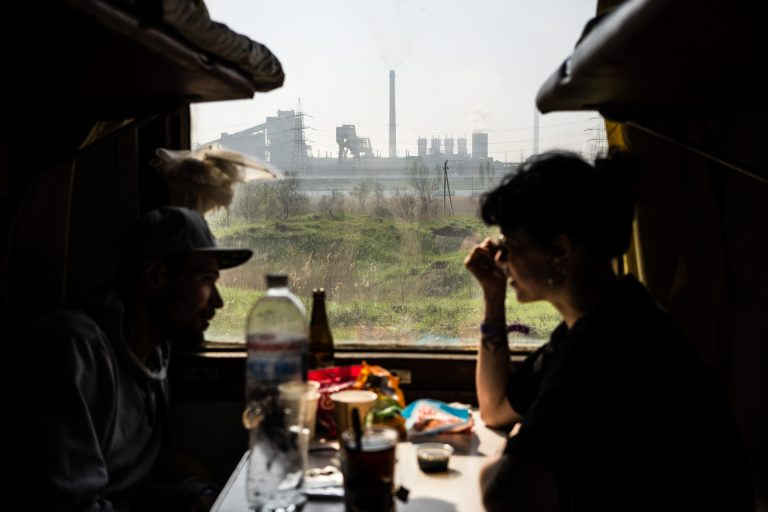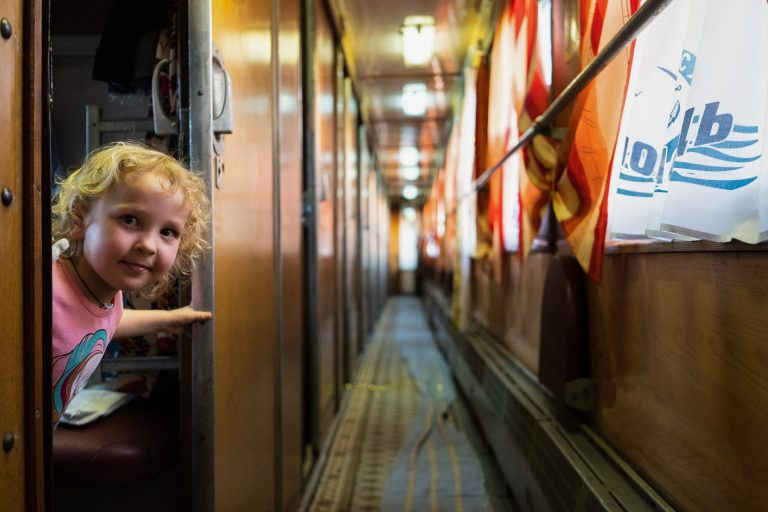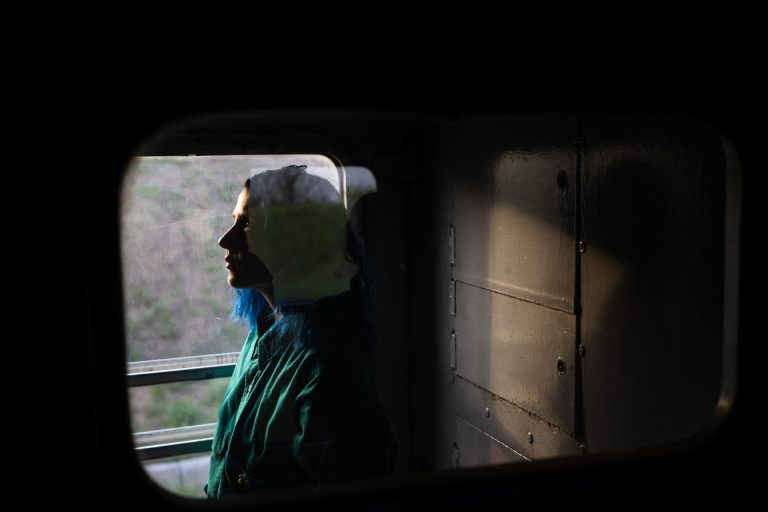The great multi-disciplined festival of modern art StartUp GogolFest has taken place since 2018 in Mariupol, where each spring hundreds of people from all over Ukraine go. For that purpose, Bogdan Yaremchuk and Denys Uhorchuk created an art train, which takes the festival participants to Mariupol, expanding the space for dialogue, interaction, and art. Organisers reached an agreement with the Ministry of Infrastructure and with the help of governmental institutions decorated eight train wagons with conceptual illustrations. GogolTrain is considered to be a scalable project of cultural mobility — people may easily travel and attend cultural events in different regions of the country.
GogolTrain is said to be the first art train in Europe. In the world, such an art project was held for the first time in Canada in 1970. Back then Grateful Dead, Janis Joplin, The Band, and other rock stars went on a tour from Toronto to Winnipeg to Calgary, arranging constant jam sessions. In 2003, the documentary Festival Express was released about this journey.
slideshow
The GogolTrain project was created by Bogdan Yaremchuk and Denys Uhorchuk, graduates of the Kyiv Mohyla Academy and founders of the Cosmos Camp art group. When still a student, Denys bought up all the tickets in a train wagon so he could take students to the Carpathians for a week.
— There were two of such trains — we called them rock ’n’ roll trains. It was absolutely an interesting way of interaction for a big group of people. Initially you go, and there are a lot of people around whom you don’t even know, but after two to three days of such a journey, you treat each other as a family. It was such a funny method of ‘social glue’, tying people, who are active, interesting by themselves, though for some reason have not met each other yet.
StartUp GogolFest took place for the first time in Mariupol in 2018. Back then, the team made an agreement with Ukrzaliznytsia (Ukrainian Railways) about two additional train wagons for festival participants from Kyiv. GogolTrain art director Andriy Yankovskyi recalls that he was going to Mariupol as one of the ordinary passengers.
— By that time, the idea seemed already exciting, since for the majority of people it was the first time they were going to visit Eastern Ukraine, except for in pictures or videos in terms of preconception.
— Eastern Ukraine turned out to be absolutely different than many people imagined it to be. Mariupol is a really nice and modern city, full of life. Among those who came to the festival, there were a lot of activists, public activists, journalists; it was sort of a mix of modern, young, and active people.
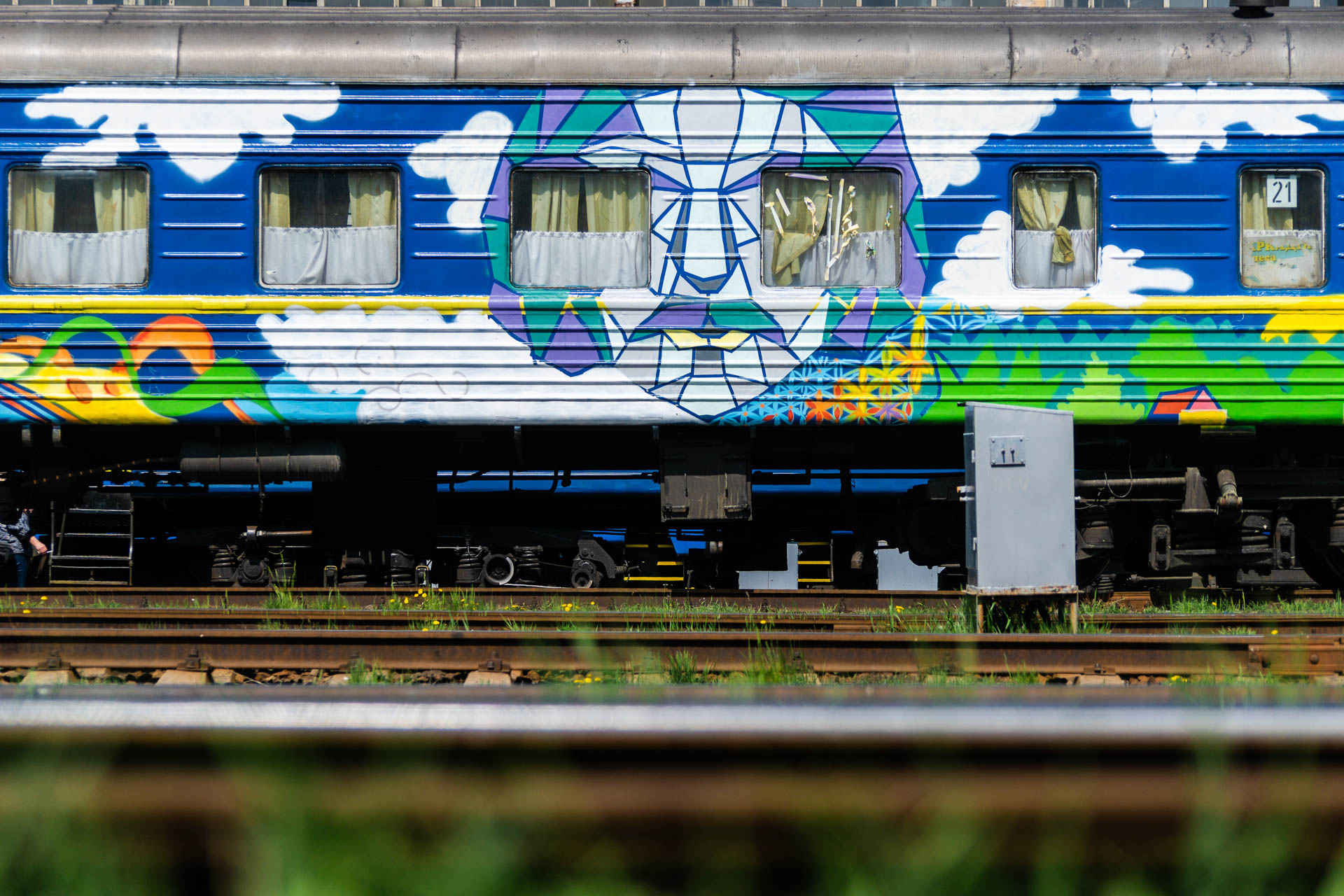
In 2019, the idea with the train wagon transformed into a proper festival train car. The GogolTrain project was presented to the Ministry of Infrastructure and Ukrzaliznytsia. Artists then took over the train for further improvement. Andriy Yankovskyi says that gradually the project acquired ambitious ideas:
— One wagon is cool, two wagons is fine too, but the whole train — it’s awesome. Especially if it is not just a number of wagons attached to a certain train — the whole train belongs to you and takes your people to Mariupol.
— We didn’t stop. It would have been great to decorate the train, conduct a performance there, and so forth. We offered it all to Ukrzaliznytsia, and they said, ‘No problem.’ We were like, ‘It’s fine then.’ Well, in fact there were some problems indeed, but ultimately we succeeded.
Organisers of GogolTrain recall that the project presentation to the Ministry of Infrastructure went smoothly. Regardless of some bureaucracy issues, governmental officials were looking for compromises with the new initiative:
slideshow
— It was a dialogue. It is our firm belief that you can achieve everything without personal contacts, bribes, violence, but simple communication. You come with the crazy idea, you explain it, and people say, ‘Fine, let’s go for it.’ Then you have to do a lot of technical stuff: hand in the application, get signatures, establish communication. I think that the main obstacle we stumbled into was communication. It is about when someone doesn’t have a clue about something. We came already with the Ukrzaliznytsia higher-ups, were shown with wagons available for decoration, and suddenly train guards are saying, ‘We are not informed, and as long as we won’t get a confirmation, you are not allowed to do so.’ I see why it happens like this: Ukrzaliznytsia, it is a huge structure. They do their best to make this project happen, but it is an extremely big hierarchical company.
slideshow
GogolTrain started its journey on the 26th of April 2019 with the route Vinnytsia to Kyiv to Dnipro to Mariupol. Initially it was supposed to depart from Kyiv, but due to the enormous requests from cultural managers of other cities, the route was extended. The art train gathered more than 300 passengers: artists, musicians, actors, producers, journalists, and festival organisers, among others.
— Hundreds of people, ready to go for five days to some Mariupol to a kind of GogolFest, in the train known to nobody — it is quite an interesting audience. It is not bad. We want to see what happens when you have all of them packed in a single closed space for the whole day. It may be a very interesting symbiosis. It seems that this synergy may be transformed into something terrific, and probably even something legendary, but it is hard to tell what exactly. That’s why I’m looking forward to seeing it.
The art train GogolTrain is a social project, with six people in charge of all operational processes. Producer Stepan Kulyna is filming a documentary about the art train, a stay in Mariupol, and about the festival itself. The team wants to show this movie at different international festivals, presenting Ukrainian modern art in that way.
slideshow
GogolTrain creative director Denys Uhorchuk says that the aim of this project is to show that Ukraine has a united society, aspiring for dialogue. As organisers point out, when you are working with the government, you have to keep in mind that it is supposed to provide society with services but not vice versa:
— By this precedent, we decided to show how it is possible to establish a partnership with the government, mainly with the Ministry of Infrastructure and Ukrzaliznytsia. Their top managers normally accept everything, and they liked the idea of a coloured train travelling to the modern art festival.
— There are plenty of festivals in Ukraine, though they are hardly reachable, because Ukraine is quite big and the train system is not hourly (meaning that trains between big cities are not operating each hour— ed.).
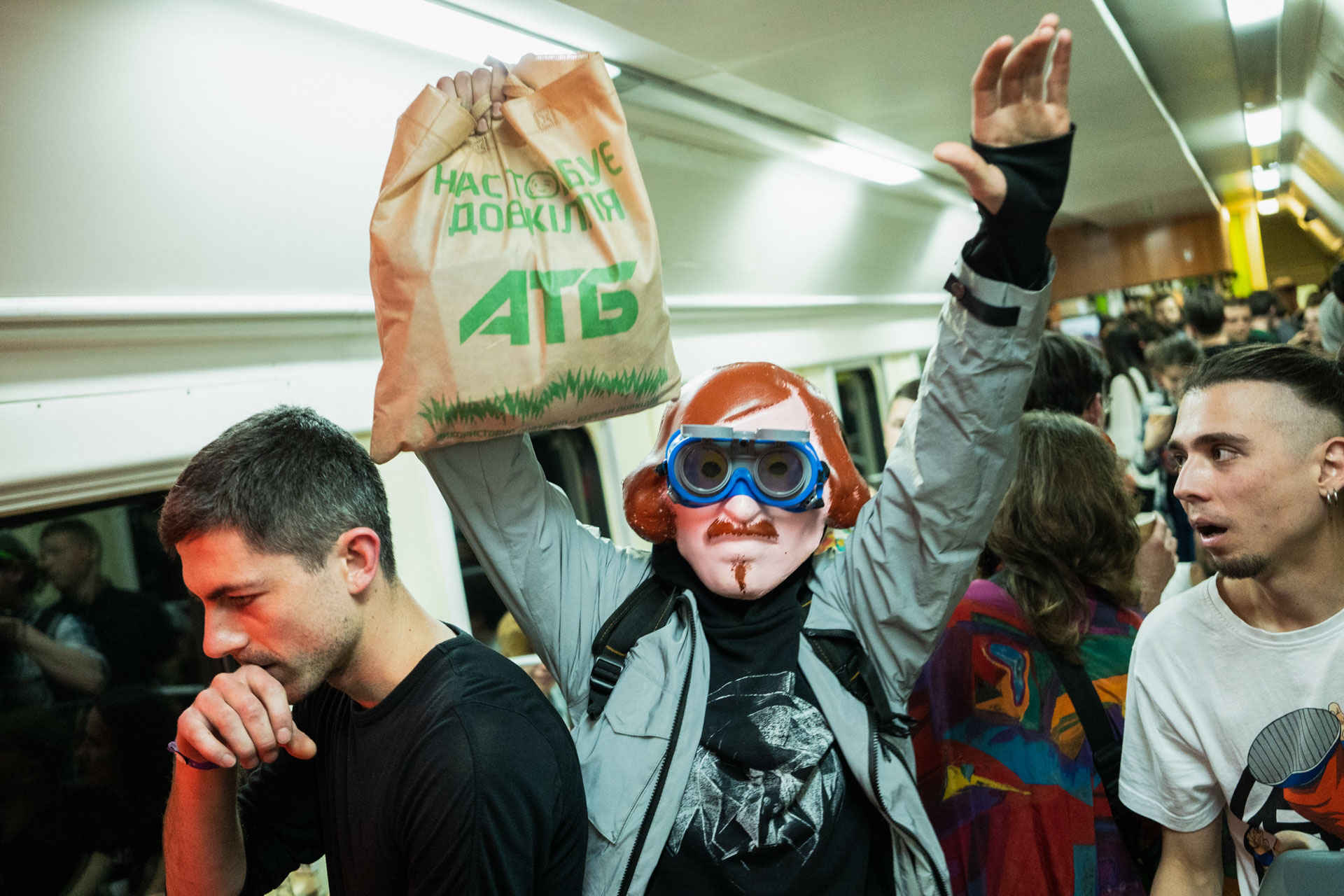
GogolTrain has worked out several rules for passengers to follow. Firstly, organisers asked to minimise the use of disposable dishes and plastic bags. Secondly, smoking in the art train was forbidden.
Apart from the special train, visitors of StartUp GogolFest had their own festival bus. Denys Uhorchuk says that for several months organisers were trying to figure out the cultural mobility and decided to show an example for other cultural initiatives how it is possible to cooperate with infrastructure. According to the organisers, a visitor to a multi-day festival in a foreign city shouldn’t have to care about logistics issues.
slideshow
— As a matter of fact, the issue of culture, as well as education, is crucial. For instance, corruption is not taking place when you don’t allow yourself greasing someone’s palm. At Mohylianka (National University of Kyiv Mohyla Academy — ed.) bribery is not allowed. It is not acceptable, and it comes from culture. Currently, culture in Ukraine is enclosed in a cyclical format. Namely there are seasonal performances, part of which is not interesting for audience. Thus people stay at home and they really have nowhere to go in the evening. Consequently, the problem of TV comes out. Why should people go out anywhere if they can watch a comedy TV show online for free? People simply aren’t used to such formats. It takes courage to get on a train and just go for five days somewhere.
.
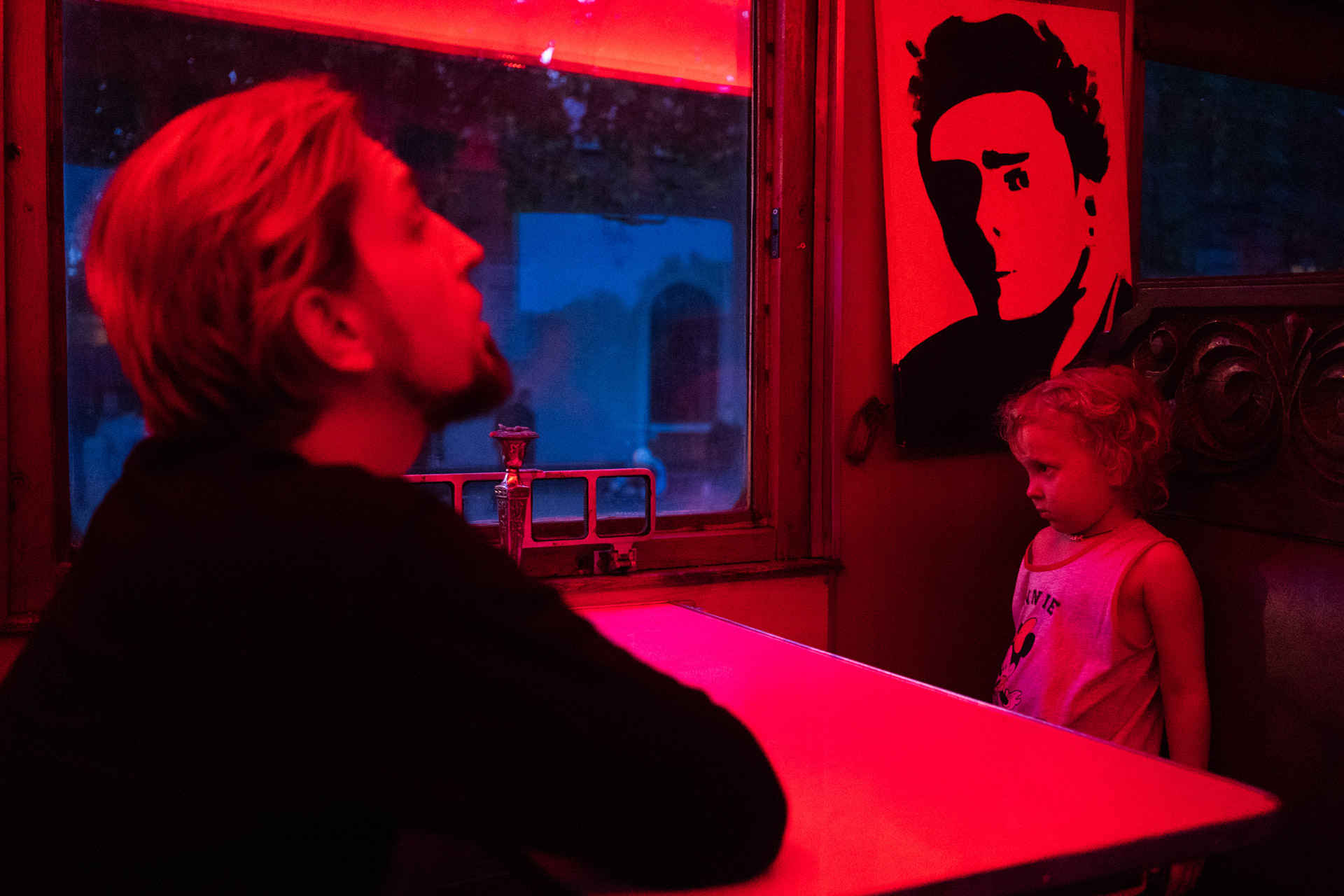
Denys Uhorchuk thinks that this cultural product in Ukraine needs more attention and support, since for now young artists don’t have enough opportunities to earn money due to copyright infringement. Therefore, such cases, when state contributes to the development of local culture, are especially valued:
— The demand for cultural projects is pretty high in Ukraine. It’s just people don’t find it reasonable that cultural projects may cost money. There is a common thought in society that it doesn’t make any sense to pay for something if you can simply stare at the TV for backward humour about khokhols (ethnic slur for Ukrainians, as it was a common haircut of Ukrainian Cossacks, mainly used by Russians — ed.). Thus, Mariupol is a great example, when the local authority reconsidered a budget for culture. They notice several millions are going toward heating a non-functioning building. Instead you can arrange GogolFest for the same amount of money. In case you are initiating some activity in your city, you have to establish cooperation with authorities or the infrastructure, because they may have everything you need. Moreover, they are interested in it too. When we were painting the train, all the depot workers were coming for an exhibition. Everyone likes it, absolutely.
slideshow
Legally painted railway wagons
Invited artists painted eight wagons of 10. They were found both online and by personal invitation. Among them were mural painters, street artists, calligraphers, illustrators, tattoo artists, and more. Andriy Yankovskyi says that it took several people to paint each wagon. In general, almost 40 people got involved in making the art train, including coordinators, volunteers, and Ukrzaliznytsia staff members:
— There is no single concept applied to the whole train, because when the festival is over, the railway wagons will be disbanded and brought back for initial purposes. Therefore, we were not able to make one big picture, so we decided to make a set of different storylines, linked by one mutual idea. Namely, each of the wagons reveals certain aspects of reality. After thinking it over, the artists made some sketches and put it on the wagons. The artists were given the conceptual task for each train car. Which car to paint was up to them. They sent sketches, and we talked it over. Some changes took place, some artists sent several options to choose between, so the process was highly individual.
slideshow
— One of the conductors told us that once he was sleeping, and he woke up and saw his wagon painted. And he had to pay his own money for oversleeping on duty. And he was telling me so while outlining the letter “T” with spray paint. That means a lot.
Andriy Yankovskyi, art director of the GogolTrain, says that among artists participating in this project, some were painting wagons without confirmation by Ukrzaliznytsia. The peculiarity of GogolTrain lies in the fact that here artists do everything legally, with the support of the institution and conductors, which are responsible for a certain wagon.
— I can’t compare illegal wagon paintings with heinous crimes, but, on the other hand, it is property damage. In this case, artists did absolutely the same thing, but didn’t have to hide or escape from the guards, had access to the whole wagon all day and night, had water and electricity supply, had great support from Ukrzaliznytsia. Namely, it is an absolutely unique case.
slideshow
Artists had to finish all the paintings within two days. It was impossible to get them in advance, since they were in constant use. Andriy says that this is his first experience in leading such a process. The art director has to solve plenty of technical issues, like searching for artists, approving samples, finding paint of needed colours, and so on. At the same time Andriy observed the commitment artists had and could not help joining the project:
— I see artists coming here at 8 in the morning and stay here till midnight. They eat once a day, just to get everything done in time. To me it seems legendary. Probably, people will forget about it in two days, but for now I consider this art project to be one of the biggest ones; it is simply a moving exhibition. Probably, I enjoy walking from one wagon to another more than walking in Berlin along the East Side Gallery parts of the Berlin Wall, outlined by paintings — ed.).
slideshow
Artist Andriy Nikolnik painted one of the wagons. Previously he has worked as a tattoo artist and now is trying other spheres of fine arts. Andriy says this is his first work of such a scale:
— To create such a work was a serious step for me. I didn’t have a lot of time, so I wasn’t satisfied with the result completely, but I did like the process. The event itself and the people involved are inspired by it.From this moment on, trains won’t be so boring and monotonous. At least one will cause different emotions.
The GogolTrain organisers chose separate names and conceptions for each wagon, including the Common Future, Parallel Realities, Dialog, Modern Ukrainian Art, Change, Diversity, and Journey wagons. There are also two restaurant wagons with bars and a stage for performances by young Ukrainian bands and poets. Passengers on the art train are called to participate actively in the festival, join the performances, and share their art with others. There is only one sleeping car that was left unpainted: Bytovukha. (The term comes from the word “byt”, or way of life, and generally means annoying everyday life without any interesting, prominent events):
—The Bytovukha wagon reflects everything we are not talking about, something we are not showing off, trying to avoid. Though it is something we always complain about and have in our everyday life. Since Soviet times, it has been accepted to hide things like that. But we didn’t want to do that. We wanted to show that apart from cool painted wagons, such ones also exist: old, scratched, rusty, a little bit worn out. We are not given the best wagons in order to make an illustrative project — we are given the simple ones. And among them there is something left under all these layers of paint, under all this art. And we are not trying to close our eyes on something that is going on, but to accept it, to take it away on a journey. That is what we are actually doing.
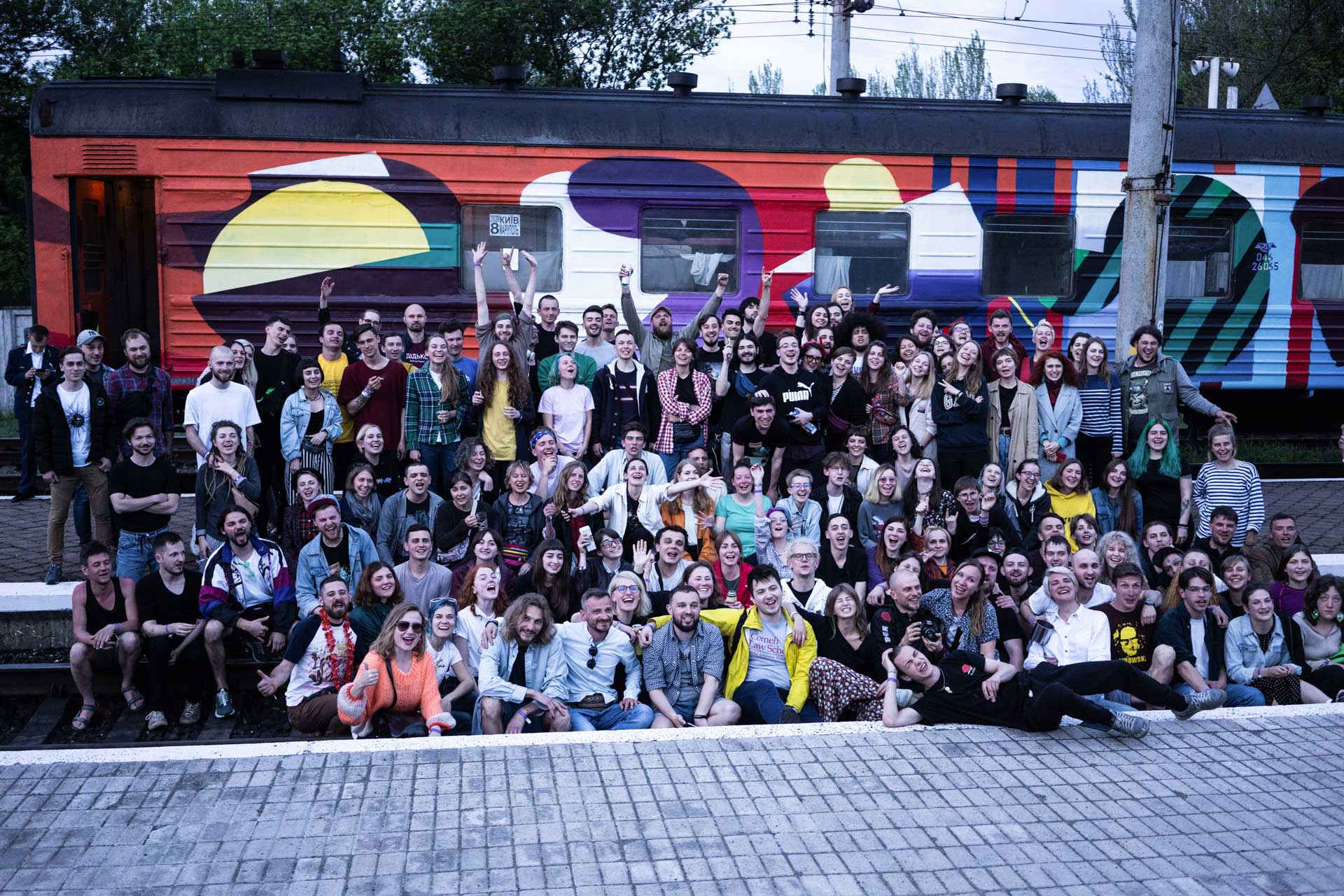
The wagons for the GogolTrain project came from different regions: Podniprovia, Lviv, and Odesa. After StartUp GogolFest, the wagons will head to their “homes” and shuttle their usual routes. The organising team of the art train seek to have more initiatives in Ukraine, acquiring opportunities for cultural trips both in Ukraine and abroad. Denys Uhorchuk says that GogolTrain creators have an idea to do similar projects for river and air transport:
— There is a super cool, big Dnipro River in Ukraine that nobody makes appropriate use of. Sure, there are some problems — river transport pollutes the ecosystem there — but this issue has to be researched anyway. We can make a weekend cruise from Kyiv to Dnipro or Odesa for instance. It has been two years already since I have been planning to rent a charter plane and hotel in Spain for 120 friends. People can do everything; you just need more people to do that. Four friends per taxi, 50 per train wagon, 300 in the whole train, and so on.

